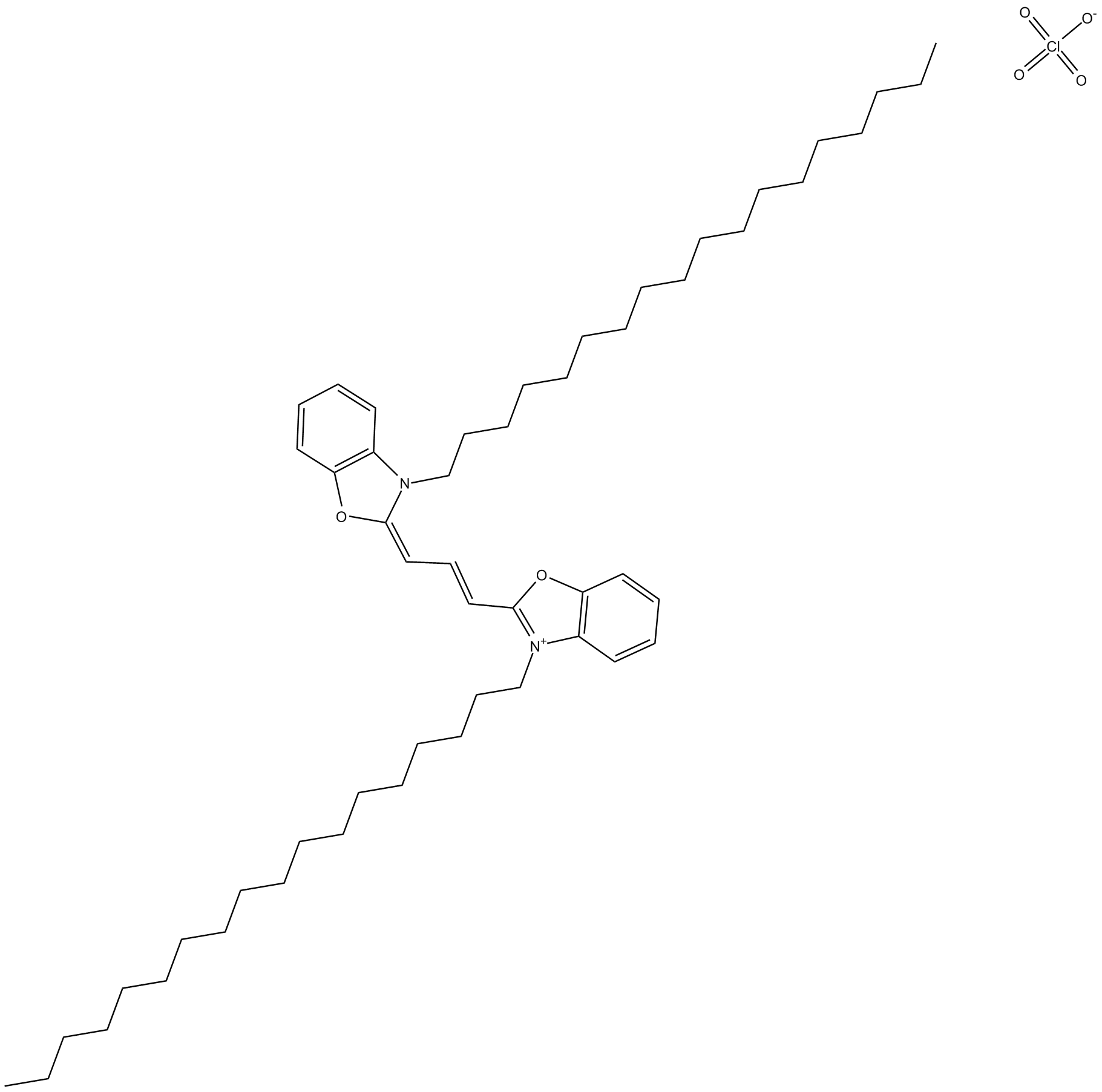DiO (Synonyms: DiOC18(3); 3,3'-Dioctadecyloxacarbocyanine perchlorate) |
| Catalog No.GC19515 |
DiO (3,3′-Dioctadecyloxacarbocyanine perchlorate) is a lipophilic long-chain carbocyanine fluorescent dye that is widely used as Di to label cells, organelles, liposomes, viruses and lipoproteins.
Products are for research use only. Not for human use. We do not sell to patients.

Cas No.: 34215-57-1
Sample solution is provided at 25 µL, 10mM.
DiO (3,3′-Dioctadecyloxacarbocyanine perchlorate) is a lipophilic long-chain carbocyanine fluorescent dye that is widely used as Di to label cells, organelles, liposomes, viruses and lipoproteins. 3,3′-Octadecyloxacarbocyanine perchlorate is a green fluorescent lipophilic tracer that is weakly fluorescent in water but highly fluorescent and comparable when incorporated into membranes Photostability. 3,3′-Octadecyloxacarbocyanine perchlorate is used as a fluorescent marker for living cells and as a lipophilic dye for labeling zebrafish embryos[1].
Long-chain carbocyanines include DiO, DiI, DiD, DiR, and the dialkylaminostyrene dye DiA for labeling membranes and other hydrophobic structures. DiO fluorochrome exhibits pronounced fluorescence, which facilitates multicolor imaging and flow cytometry analysis of living cells[2]. DiO can be used with standard FITC filters.
References:
[1]. Anat Samuel, et al. Six3 regulates optic nerve development via multiple mechanisms. 2016 Jan 29;6:20267. doi: 10.1038/srep20267.
[2]. Bhowmik BB, et al. Photophysical studies of 3,3' dioctadecyloxacarbocyanine dye in model biological membranes and different solvents. Chem Phys Lipids. 2001 Feb;109(2):175-83.
Average Rating: 5 (Based on Reviews and 11 reference(s) in Google Scholar.)
GLPBIO products are for RESEARCH USE ONLY. Please make sure your review or question is research based.
Required fields are marked with *




















